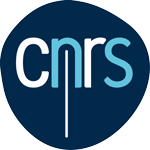Time and laser ranging: a window of opportunity for geodesy, navigation, and metrology
Résumé
Recent progress in the domain of time and frequency (T/F) standards requires important improvements in existing time distribution links, in term of accuracy in particular. Satellite Laser Ranging (SLR) has proven to be a fundamental tool, offering a straightforward, conceptually simple, highly accurate, and unambiguous observable. Several time transfers by laser link projects have been carried out over the past 10 years with numerous scientific and metrological objectives. Depending on the mission, SLR is used to transmit time over two-way or one-way distances from 500 to several millions of kilometer. The following missions and their objectives employed this technique: European Laser Timing (ELT, expected in 2020) at 450 km, Time Transfer by Laser Link (T2L2) at 1336 km, Laser Time Transfer at 36,000 km, Lunar Reconnaissance Orbiter at 350,000 km, and MErcury Surface, Space ENvironment, GEochemistry, and Ranging at tens of million km. This article describes the synergy between SLR and T/F technologies developed on the ground and in space and as well as the state of the art of their exploitation. The performance and sources of limitation of such space missions are analyzed. It shows that current and future challenges lie in the improvement in the time accuracy and stability of the time for ground geodetic observatories. The role of the next generation of SLR systems is emphasized both in space and at ground level, from the point of view of Global Geodetic Observing System and valuable exploitation of the synergy between time synchronization, ranging, and data transfer.





